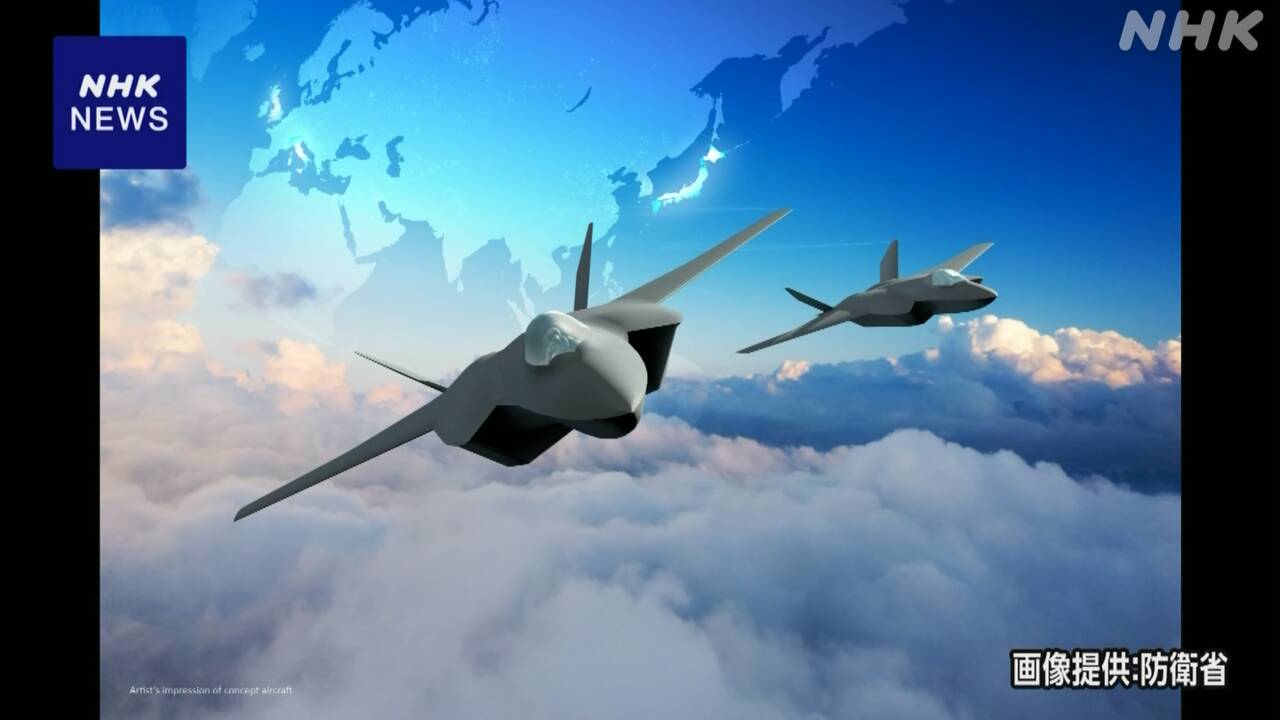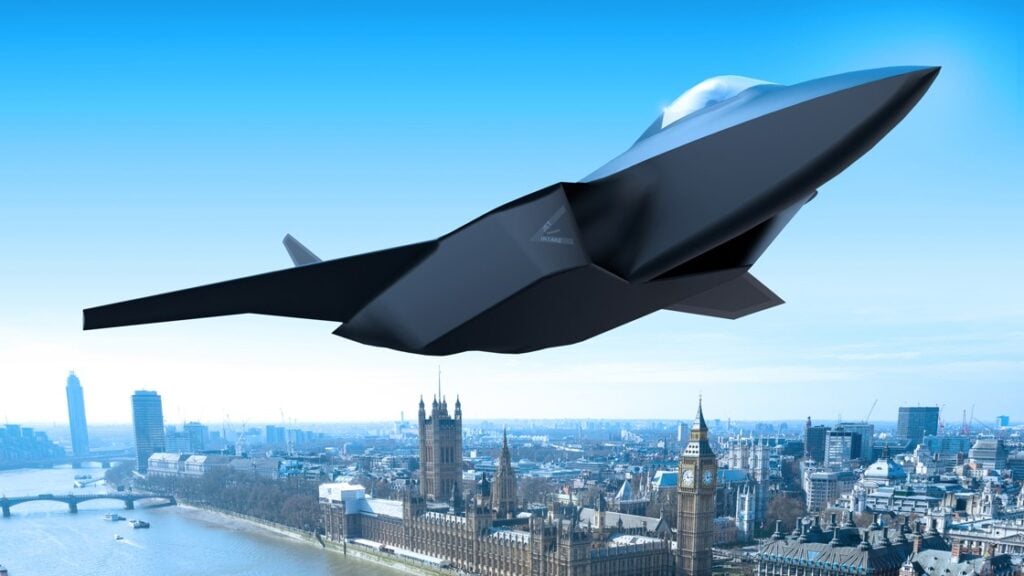WatcherZero
ACCESS: Secret
- Joined
- 22 May 2023
- Messages
- 435
- Reaction score
- 750
I thought no ITAR solves all of this, no ITAR and open sharing means one big happy family?
ITAR probably applies to the joint AU-UK-US drone and AI work.
I thought no ITAR solves all of this, no ITAR and open sharing means one big happy family?

Does the "non-partner countries" mean those who are not part of the 15 countries who've signed the agreement with Japan about the transfer of mitary equipment and technology, or GCAP partners?View: https://twitter.com/Naikakukanbo/status/1772423093727657986
Japan finally approved 3rd party sales of GCAP to non-partner countries.
政府 日英伊で共同開発の次期戦闘機 第三国への輸出容認を決定 | NHK
【NHK】イギリス・イタリアと共同開発を進めている次期戦闘機について、政府は第三国への輸出を容認することを決定しました。実際に輸出…www3.nhk.or.jp

Whilst it’s too early to speak with any certainty it wouldn’t be surprising to me if NGAD (or at least the manned component) falls under the same sort of export restrictions as the F-22. In that scenario there’s only really two other options to pick from, and GCAP/Tempest comes from a country they’ve already got close defence and political ties with (amongst others).In the long run I would think that joining GCAP would be much cheaper than trying to design and build their own sixth generation fighter as Japan found out. It also depends on what happens to the US NGAD program.
I dunno. Japan is still very defensively minded politically, and SSNs are really an offensive weapon. They have the sustained submerged speed to go hunting, while an AIP boat has to let the enemy come to it.It's potentially likely due to increasing collaboration and integration between AUKUS members. Japan is top of the list for likely new members, making GCAP very likely their entry card in, and dare we suggest SSNs the expected reward.
I also expect NGAD/FAXX to be export restricted like the F22 ended up. How much range the GCAP planes (plural**) have is going to be an interesting discussion.Whilst it’s too early to speak with any certainty it wouldn’t be surprising to me if NGAD (or at least the manned component) falls under the same sort of export restrictions as the F-22. In that scenario there’s only really two other options to pick from, and GCAP/Tempest comes from a country they’ve already got close defence and political ties with (amongst others).
* As I understand it, at least the UK and Japan are going to be building different airframes. Same systems and engines, but I'm willing to bet that Japan will want much longer range.
Japan's policy is now "proactive defense" by striking enemy air bases and missile sites and they just started training launch scenarios for their "defensive" Tomahawks this week.I dunno. Japan is still very defensively minded politically, and SSNs are really an offensive weapon. They have the sustained submerged speed to go hunting, while an AIP boat has to let the enemy come to it.
This issue also isn't with tech as Japan has some of the best small reactor tech in the world. It's more that Japan doesn't really need the endurance that SSNs provide as all of the threats are located in their local waters. Japan has basically perfected the SSK and they have enough range and endurance for what is needed. The only thing I could think off that an SSN would provide Japan is continuous trailing of Chinese SSBNs, but the US/Japanese SOSUS in the area is so dense that it can keep track of noisy Chinese 094s. We are much closer to seeing Japanese SSBKs with the next class having VLS cells than any SSN. I would imagine that Japan's entry into AUKUS will be for the other pillars such as AI tech and computing than anything else. Still I think AUS joining GCAP as a junior member would be cool and Japan getting into AUKUS after getting scammed out of the Sub deal by the French would be pretty funny too.SSNs the expected reward.
As you argue below, Japan doesn't want/need SSNs.Japan's policy is now "proactive defense" by striking enemy air bases and missile sites and they just started training launch scenarios for their "defensive" Tomahawks this week.
Pretty sure it'll be SSGs, maybe SSGA. Cruise missiles instead of ballistic, and maybe back to AIP for those subs.This issue also isn't with tech as Japan has some of the best small reactor tech in the world. It's more that Japan doesn't really need the endurance that SSNs provide as all of the threats are located in their local waters. Japan has basically perfected the SSK and they have enough range and endurance for what is needed. The only thing I could think off that an SSN would provide Japan is continuous trailing of Chinese SSBNs, but the US/Japanese SOSUS in the area is so dense that it can keep track of noisy Chinese 094s. We are much closer to seeing Japanese SSBKs with the next class having VLS cells than any SSN. I would imagine that Japan's entry into AUKUS will be for the other pillars such as AI tech and computing than anything else. Still I think AUS joining GCAP as a junior member would be cool and Japan getting into AUKUS after getting scammed out of the Sub deal by the French would be pretty funny too.
No, that is not true. It also defeats the entire premise of merging Tempest (the fighter jet, not the current technology demonstrator prototype) and F-X.I also expect NGAD/FAXX to be export restricted like the F22 ended up. How much range the GCAP planes (plural**) have is going to be an interesting discussion.
** As I understand it, at least the UK and Japan are going to be building different airframes. Same systems and engines, but I'm willing to bet that Japan will want much longer range.
If the different countries aren't building different airframes, why are they building the entire plane in each country instead of each country building individual sections like with the F-35?No, that is not true. It also defeats the entire premise of merging Tempest (the fighter jet, not the current technology demonstrator prototype) and F-X.
If the different countries aren't building different airframes, why are they building the entire plane in each country instead of each country building individual sections like with the F-35?
Why don't you ask that to the folks at Eurofighter GmbH?If the different countries aren't building different airframes, why are they building the entire plane in each country instead of each country building individual sections like with the F-35?
Didn't realize there was a second production line. And we're talking about something with a total production run already over 1000 airframes with a total planned of over 5000 (IIRC some 3500 in the US alone).Well the F-35 has more than one assembly line (there’s one in Italy as well as the primary US line). So no particular logic in that statement.
Two reasons.Why is each country building a complete airframe?
Shouldn't all partners have the manufacturing documents of all components so that they can change the source?but it's certain a single source provider will exert it's influence for it's benefit and not for partners.
Then you really screwed up when you agreed to build military equipment with them in the first place.+ you never know if the men in the assemblyline on the other side of the globe work for you or work against you and sabotate the aircraft in a way that a failure occur after 100 fh.
Depends on how the partnership is put together. In the case of F-35, I believe that LockMart is the controller of the overwhelming majority of manufacturing documents.Shouldn't all partners have the manufacturing documents of all components so that they can change the source?
Yeah, that's exactly what I'm saying. Why do you think that Eurofighter partners are operating separate final assembly lines despite the cost? Do you seriously think that they are all too dumb to have not anticipated higher cost compared to, say, having a si gle final assembly line in UK? Obviously not, there might be a different reason don't you think?Still doesn't change the question: Why is each country building a complete airframe? That's going to be significantly more expensive than having one assembly line running off all 600ish airframes instead of at least 3 separate production lines each making 200ish.
@Maro.Kyo because doing it that way is more expensive.
Yup, probably will the model for GCAP as well. Single or two-source for components/individual equipments but final assembly of said components in each of the 3 countries. Hence the reason why Industrial workshare (or the none-decision thereof) is still an issue for GCAP.The Eurofighter model is pretty similar to F-35 actually:
Different components and airframe sections are produced in different locations. Most of these are single source. Some are assembled together in those different locations (e.g. rear fuselage). They are then brought together at final assembly and check out lines of which there are multiple.
The difference with F-35 is that almost all of the final assembly is done on a single line at Fort Worth, rather than (roughly) equally split across multiple lines.
The difference with F-35 is that almost all of the final assembly is done on a single line at Fort Worth, rather than (roughly) equally split across multiple lines.
Australia will replace the Super Hornets/Growlers around 2035-2040 at this stage. Likely replacements will be more F-35s and/or uninhabited platforms.The GCAP/Tempest would be a good replacement for the Australian Super Hornets when they are going to be retired, that is IF Australia are interested in joining the program in the long run.
I'm honestly expecting bomber and EW CCAs to happen pretty quickly. Don't know why the USAF isn't looking at fighter-bomber CCAs.Australia will replace the Super Hornets/Growlers around 2035-2040 at this stage. Likely replacements will be more F-35s and/or uninhabited platforms.
Australia will replace the Super Hornets/Growlers around 2035-2040 at this stage. Likely replacements will be more F-35s and/or uninhabited platforms.
“We will look at the F-35 and we’re very, very comfortable and very happy with the capability of the F-35,” Chipman said. “But it would be remiss of me not to look at what else is available for us to replace our Super Hornets in the future."
That's honestly a really good reason to SLEP the Super Bugs.The head of the RAAF said when announcing the life extension of the Super Hornets (vs. buying F-35A replacements straight away, as originally planned) that it would allow them to look at next generation fighters before deciding.
RAAF Eyes Super Hornet Extension, Future Competition | Aviation Week Network
The new plan means the Lockheed Martin F-35A Lightning II is no longer guaranteed to win a follow-on order.aviationweek.com
RAF Leeming to GIUK Gap, c600nm (Leeming to Bodo, 900nm, to St Petersburg 1100nm, to Kaliningrad 775nm)
Nyutabaru AFB to Ishigaki/Senkakus, c600nm (Nyutabaru to Shanghai, 500nm)
Agreed, the USAF needs extended range in the Pacific, because it's talking about projecting power from Guam, and people assume that naturally applies to everyone there, but Japan is a Pacific Rim country, not deep in Micronesia. Japan's situation is much more like the UK's than the US's, an offshore country facing a continental opponent. It only needs to project power towards the Chinese coast, not deep into the Pacific.The RAF absolutely wants serious range...arguably more than the Japanese.
